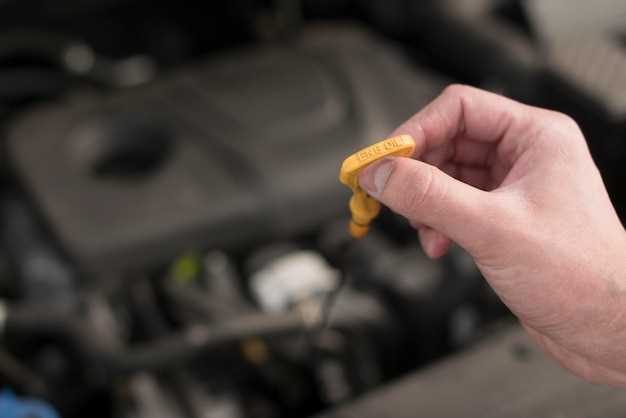
How to maintain your steering rack
- Dominique Kaye
- 0
- Posted on

The steering rack is a crucial component of your vehicle’s steering system, playing a vital role in ensuring a smooth and responsive driving experience. Maintaining this essential part is key to extending its lifespan and preventing costly repairs. One of the primary factors influencing the longevity of your steering rack is the quality and condition of the fluid that circulates through it.
Over time, steering fluid can degrade due to heat and contamination, leading to diminished performance and potential damage to the rack. By regularly checking and replacing the steering fluid, you can help protect the internal components and ensure optimal functionality. This guide will explore effective maintenance practices, giving you the knowledge needed to keep your steering rack in top shape for years to come.
In addition to fluid maintenance, understanding common signs of wear and tear can aid in early detection of issues within the steering rack. By being proactive and informed, you can prevent minor problems from escalating into major repairs, ultimately saving you time and money. Let’s delve deeper into the best practices for maintaining your steering rack and ensuring its longevity.
How to Inspect and Identify Wear in Your Steering Rack

Regular inspection of your steering rack is crucial for ensuring optimal performance and longevity. Start by checking for any signs of fluid leaks around the steering rack and associated components. Leaking steering fluid can indicate worn seals or damaged parts, which can negatively affect your steering responsiveness.
Next, assess the overall condition of the rack itself. Look for any visible damage such as bending, cracks, or rust. These issues can lead to serious steering problems if not addressed promptly. If the surface appears worn or degraded, it is a sign that the rack may require replacement.
While inspecting, turn the steering wheel to feel for any unusual resistance or play. Excessive free play can mean that the internal components of the rack are worn out. Listen for any strange noises, such as grinding or clunking, which may indicate that the gears within the rack are damaged.
Finally, check the alignment of the steering components. Misalignment can cause uneven wear on the rack and lead to premature failure. If you notice any misalignment, it is important to have it corrected as soon as possible to maintain the integrity of the steering system.
Choosing the Right Fluid for Your Steering System

Selecting the appropriate fluid for your steering rack is crucial for ensuring smooth operation and longevity. The steering system relies on hydraulic fluid to facilitate the movement of the rack, translating driver input into wheel motion. Using the wrong type of fluid can lead to performance issues and potential damage.
The most common fluids used in steering systems are power steering fluid and ATF (automatic transmission fluid). Power steering fluid is specifically formulated to work with hydraulic components, offering excellent lubricating properties and resistance to foaming. In contrast, ATF is suitable for certain systems but may not provide the same level of protection against corrosion and wear as dedicated power steering fluid.
Always consult your vehicle’s owner manual to determine the manufacturer’s recommendations regarding fluid specifications. Factors such as viscosity and chemical compatibility are important considerations. Using a fluid that does not meet these specifications can lead to overheating, leaks, and ultimately, steering rack failure.
Transitioning from one type of fluid to another should be approached with caution. If you switch from power steering fluid to ATF or vice versa, it may be necessary to completely flush the system to avoid potential fluid incompatibility issues. Regular maintenance, including fluid checks and replacements, will help maintain the performance of your steering rack.
Additionally, monitor the fluid level and condition periodically. Signs of contamination, such as discoloration or a burnt smell, indicate that the fluid needs to be changed. Keeping your steering system filled with the correct and clean fluid is essential to prevent premature wear and ensure optimal functionality.
Steps for Properly Flushing and Refilling Steering Fluid
Flushing and refilling the steering fluid is a crucial maintenance task that ensures the longevity of your steering rack. This process helps remove contaminants and old fluid that may hinder the performance of your steering system. Follow these detailed steps for effective flushing and refilling.
1. Gather Necessary Supplies
Before you begin, collect all required materials. You will need a fluid extractor or turkey baster, a clean container for old fluid, a funnel, and the appropriate type of steering fluid as specified in your vehicle’s owner manual.
2. Locate the Steering Fluid Reservoir
Open the hood and find the steering fluid reservoir. This is typically a translucent container labeled with a steering wheel icon. Ensure the engine is off and cool for safety.
3. Remove Old Steering Fluid
Using the fluid extractor or turkey baster, carefully draw out the old steering fluid from the reservoir. Dispose of the old fluid in accordance with local regulations, as it is considered hazardous waste.
4. Flush the System (If Necessary)
If a complete flush is required, disconnect the return line from the steering rack. Place a container under the line to catch the old fluid. Have someone turn the steering wheel from lock to lock while you pour new steering fluid into the reservoir. This action will push out the dirty fluid through the return line. Repeat until the fluid runs clear.
5. Reconnect and Fill the Reservoir
Reconnect the return line securely. Using a funnel, slowly pour new steering fluid into the reservoir until it reaches the recommended level. Avoid overfilling, as this can cause leaks.
6. Bleed the Steering System
To ensure that all air bubbles are removed from the system, turn the steering wheel slowly from lock to lock several times with the engine off, then repeat with the engine running. Check the fluid level again, adding more if necessary.
7. Inspect for Leaks
After completing the process, inspect the steering system for any visible leaks around the hoses and connections. Address any issues immediately to prevent fluid loss and ensure proper steering function.
By following these steps for flushing and refilling your steering fluid, you contribute significantly to the longevity and performance of your steering rack, enhancing both safety and driving experience.
